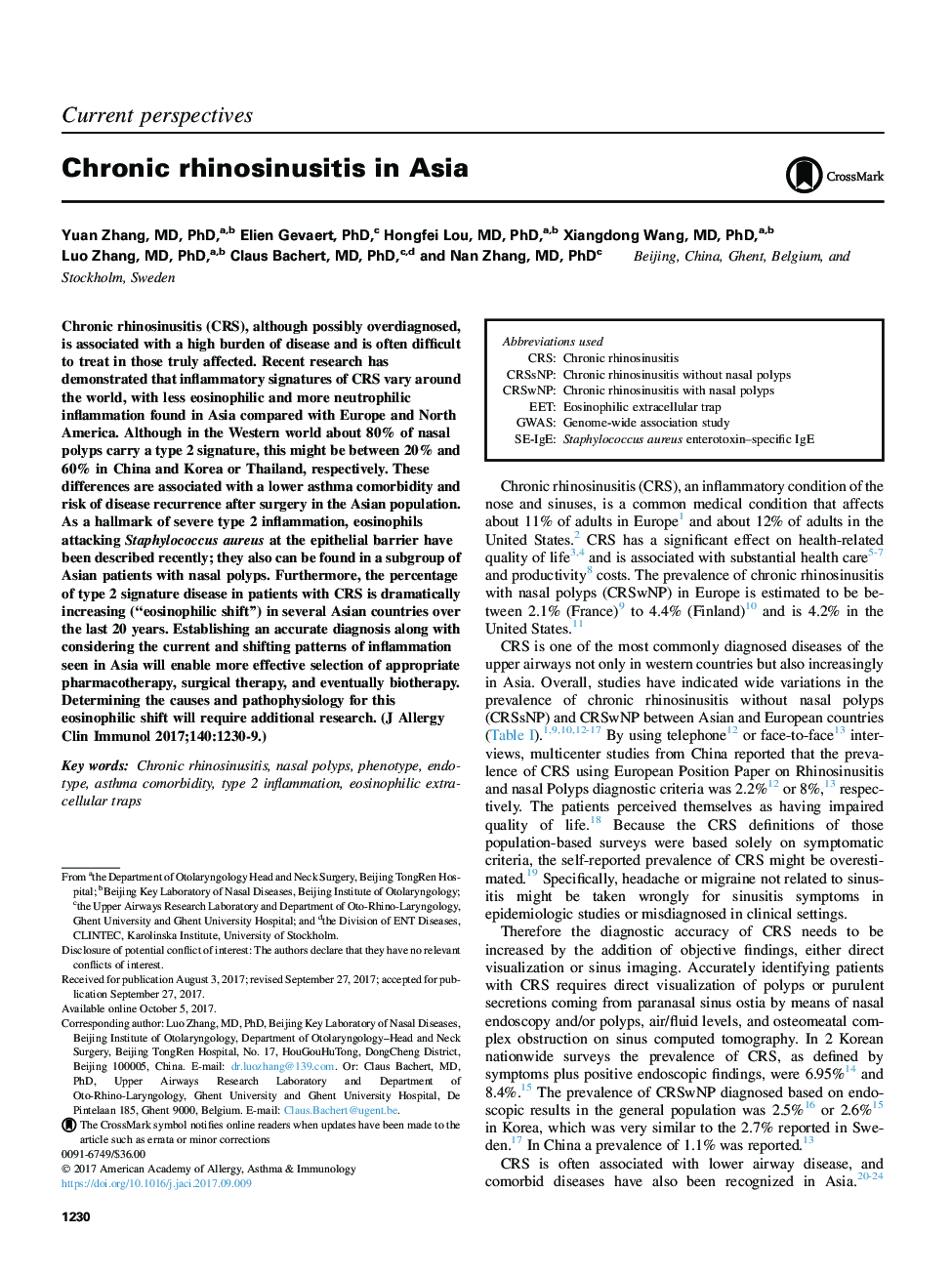| Article ID | Journal | Published Year | Pages | File Type |
|---|---|---|---|---|
| 8713970 | Journal of Allergy and Clinical Immunology | 2017 | 10 Pages |
Abstract
Chronic rhinosinusitis (CRS), although possibly overdiagnosed, is associated with a high burden of disease and is often difficult to treat in those truly affected. Recent research has demonstrated that inflammatory signatures of CRS vary around the world, with less eosinophilic and more neutrophilic inflammation found in Asia compared with Europe and North America. Although in the Western world about 80% of nasal polyps carry a type 2 signature, this might be between 20% and 60% in China and Korea or Thailand, respectively. These differences are associated with a lower asthma comorbidity and risk of disease recurrence after surgery in the Asian population. As a hallmark of severe type 2 inflammation, eosinophils attacking Staphylococcus aureus at the epithelial barrier have been described recently; they also can be found in a subgroup of Asian patients with nasal polyps. Furthermore, the percentage of type 2 signature disease in patients with CRS is dramatically increasing (“eosinophilic shift”) in several Asian countries over the last 20Â years. Establishing an accurate diagnosis along with considering the current and shifting patterns of inflammation seen in Asia will enable more effective selection of appropriate pharmacotherapy, surgical therapy, and eventually biotherapy. Determining the causes and pathophysiology for this eosinophilic shift will require additional research.
Keywords
Related Topics
Life Sciences
Immunology and Microbiology
Immunology
Authors
Yuan MD, PhD, Elien PhD, Hongfei MD, PhD, Xiangdong MD, PhD, Luo MD, PhD, Claus MD, PhD, Nan MD, PhD,
